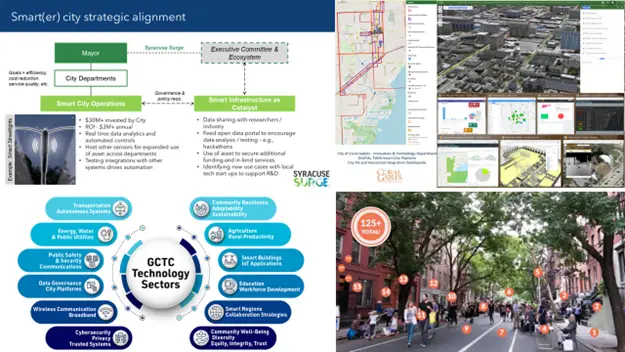The NIST Global Community Technology Challenge ( GCTC ) presented three smart city projects on a panel at the Smart Cities Connect conference in Washington, D.C., on November 28, 2023. These projects were examples of city initiatives to improve transparency and open access to information between local government and community residents, and they could be used as models for other communities. At the nexus of technology, data, geography, and urban design, panel members included Dr. Mariela Alfonzo, CEO of State of Place, Chief Technology Officer of Coral Gables, Florida, Jennifer Tifft, Office of the Mayor of Syracuse, New York. The panel was presided over by Michael Dunaway, the director of the GCTC’s NIST program.
The National Standards Strategy for Critical and Emerging Technology ( NSSCET ) and its references to smart cities, the Internet of Things, and connected infrastructure were briefly discussed by Michael Dunaway after the cities ‘ presentations. Additionally, he extended an invitation to participants in the NIST Virtual Public Listening Session on December 19 that seeks public feedback on the Request for Information ( RFI ) regarding the NSSCET’s implementation.
Following the conference, the GCTC team and city representatives took part in a workshop organized by the Science and Technology Adviser at the U.S. Department of State to define ideas and values that could help foreign service officers introduce American smart cities ‘ policies and initiatives to international contacts and find business opportunities for American technology companies.











